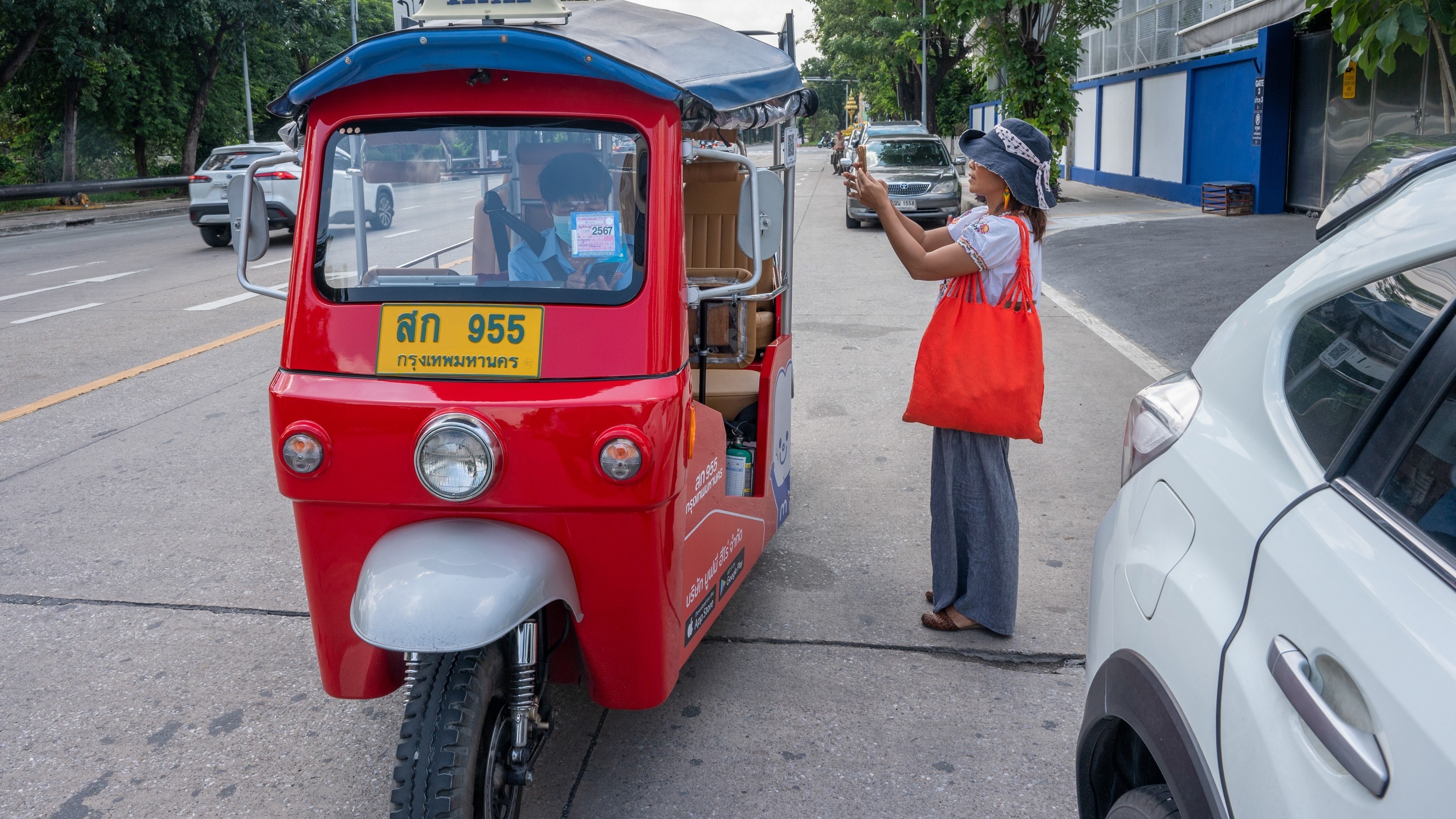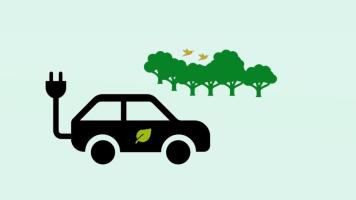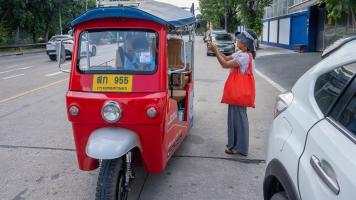
Two wheelers like mopeds and and scooters, as well as higher-powered motorcycles, and three wheelers, like tricycles, are among those categorized as electric light vehicles under the ASEAN guidelines. Photo credit: ADB.
While the electrification of cars is on the agenda in many countries, two and three-wheelers are still largely out of scope as the region decarbonizes.
Almost 250 million motorcycles and other light motorized vehicles cruise through Southeast Asia’s streets, accounting for around 80% of all vehicles in the region.
These two and three-wheeler vehicles are popular across the region for a reason: they are affordable and widely available. Because of their size, they are easy to maneuver and are ideal to navigate through the region’s narrow roads and heavy traffic. However, these motorized light vehicles, the vast majority of which run on fuel and diesel, spew high levels of air pollutants and greenhouse gases, negatively affecting public health and the environment.
As such, ASEAN wants member countries to phase in electric motorcycles as part of its decarbonization strategy. “While the electrification of car fleets is on the agenda in many countries, two and three-wheel vehicles are still largely out of the scope,” according to ASEAN’s recently released guidelines on adopting electric motorcycles. “Electrifying both private and commercial light vehicle fleets can provide quick wins in reducing urban pollution and decarbonizing the transport sector,” said the guide.
Southeast Asian countries have committed national net-zero targets, as the region is among the most vulnerable to climate change. Insurer Swiss Re estimated the region could lose up to 30% of its gross domestic product by 2050 due to climate change. The region needs to cut greenhouse gas emissions by 10% to 25% by 2030 (relative to its current trajectory) to limit global warming to 1.5°C.
With the guidelines, ASEAN hopes to assist governments in promoting the adoption of light electric vehicles by providing a framework to develop policies and foster collaboration. The guidelines do not provide a one-size-fits-all approach for all member states but recommends a process for defining country-specific strategies to speed the process of adopting electric light vehicles.
Two wheelers like mopeds and and scooters, as well as higher-powered motorcycles, and three wheelers, like tricycles, are among those categorized as electric light vehicles under the ASEAN guidelines.
Revenue opportunities
A 2023 report co-published by the Asian Development Bank said the global push to decarbonize by 2050 presents huge opportunities for Southeast Asia in the manufacture of electric two-wheelers, along with solar photovoltaic panels and batteries. Specifically, it estimated between $90 billion and $100 billion in revenue opportunity in carbon mobility and clean power segments by 2030.
The report said the region has room to grow in both production capacity and demand for electric two wheelers.
The region is well-positioned to meet the demand for electric motorcycles as it already produces 6%–10% of all electric two-wheelers.
Southeast Asia also has natural advantages to support the scale-up of production, as it already corners 25% of the global two-wheeler market. Motorcycles are widely used in Viet Nam, Indonesia, Malaysia, and Thailand.
Challenges
ASEAN member states though have to overcome obstacles limiting the uptake and user acceptance of electric light vehicles. These include purchase costs, concerns regarding quality, and the availability of charging infrastructure.
Purchase costs. A key barrier to adoption is the price point. Electric mopeds and motorcycles cost 1.5 to 2 times more than conventional or internal combustion engines.
Vehicle quality and public perception. Concerns remain about both product quality and public perception of electric light vehicles. Inadequate quality assurance can result in poorly made vehicles, which may raise safety concerns and lead to breakdowns, the guide said. Buyers of inexpensive and low-quality models may not have access to reliable after-sales service and readily available parts. The region also has to overcome public perception that light electric vehicles are expensive, “with questionable quality” compared with their gasoline-powered counterparts.
Charging infrastructure and grid reliability. Most electric light models can be charged at home. However, additional take-up would impact energy demand from home charging and may impact distribution networks at the district level or for installations inside houses. There may also be risk of fire hazards. Limited charging infrastructure and battery swapping services meanwhile create difficulties for users.
Comprehensive strategy
To overcome these challenges, ASEAN’s guidelines provide steps that each member state can follow in setting up a comprehensive strategy for the electrification of motorized light vehicles:
- Stage 1: Building a vision. Building a sustainable ecosystem for electric light vehicles requires collaboration and a shared vision among all stakeholders. Stakeholders include public authorities, manufacturers, fleet managers, civil society, and electricity providers. The shared vision should incorporate environmental, social, and economic sustainability.
- Stage 2: Understanding the light electric vehicle ecosystem. Setting up a sustainable ecosystem requires having stakeholders who work together to facilitate the shift and develop the infrastructure needed for the production and end-of-life stage of the vehicles. The relevant actors include national and local governments, manufacturers, and users.
- Stage 3: Identifying challenges and opportunities. ASEAN would need to establish clear regulations to address challenges relating to law enforcement, road safety, and certainty for users.
- Stage 4: Setting targets and policy measures. A successful strategy should address the specific needs and context of each country. Policies should comprise a combination of incentives, regulations, and phase-out plans for fossil-fueled vehicles and the phase in of their electric counterparts.
- Stage 5: Monitoring and evaluation. The successful uptake of light electric vehicles requires clear objectives and continuous monitoring, which is often neglected. Monitoring identifies issues at an early stage, allowing stakeholders to adjust their strategies and plans.


